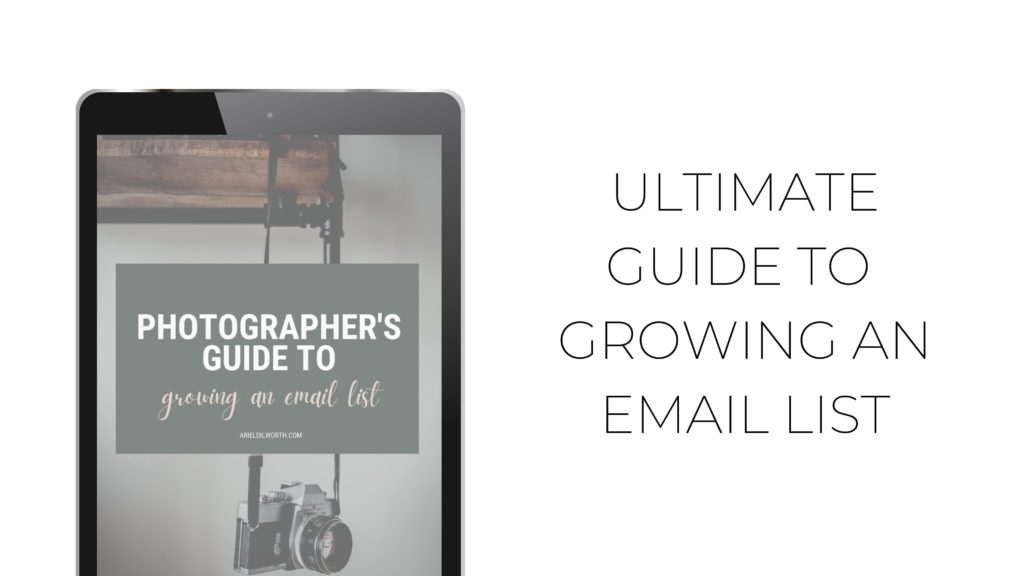How to Know if Your Marketing is Working
March 12, 2021
You know marketing your photography business is important and it takes a lot of time, but how do you know if your marketing is working? Honestly, there’s not an easy answer to that question.
Most photographers do what is called “Content Marketing.” Content marketing is where you post content (social media posts, blogs, SEO, etc.) to grow your business. And while it’s easy to get fixated on shares and comments, that actually isn’t the most important piece of the puzzle.
Content marketing is a big picture strategy when marketing your photography business.

Goals of Content Marketing
When determining the success of your marketing there are a few things you’ll want to consider:
- Lead Generation
- Brand Awareness
- Engagement
- Lead Nurturing
- Sales
- Customer Retention/Loyalty
- Building an Audience via Subscription Growth
All of those goals are important things to consider when we are marketing our photography business’ but, our goal isn’t going to be the same for each platform. In my More than Marketing course, I teach photographers how to map out their marketing and what the goals and objectives are for each type of marketing.
“working”
In order to know if your marketing is working you need to know what you are wanting it to do. What is your definition of “working?”
Before you start tracking metrics and engagement rates ask yourself these questions:
- What type of people engage with your content?
- How will your readers be moved by your content? How will they feel?
- What actions will these feelings lead to?
- What transformation will the reader experience upon taking action?
- How will these actions influence your business objectives?
All of this will help you focus on the direction of your strategy when you are marketing your photography business.
Bad Signs
Generally if these things are true, then it’s time to take a look at your marketing:
- No Inquiries
- Inquiries but not conversions
- Attracting the wrong people
- No Engagement from your Audience
- You don’t regularly look at your website or social media metrics
- Your marketing strategy isn’t tied to your overall business strategy
- You don’t have a well-defined marketing strategy that includes: branding, position, and messaging
- Getting complaints about pricing consistently
- Bad reviews or feedback from clients
- Your website isn’t helping to convert visitors into leads
- You’re hesitant to give out your website address
- You’re not effectively using e-mail for marketing, sales, and customer service
- Less than 10% of your website’s traffic originates from social media
- You aren’t reaching your financial goals
- Your competitors are killing you
Website Traffic
There is absolutely no point in writing content if nobody sees it. There are 6 types of website traffic you need to record:
- Social Media- visitors who come to your website via social media pages
- Google- Finding you on a google search and then clicking your page
- Direct Traffic- this is when people directly type in your URL
- Email Traffic- visitors who visit your website or blog or social media page from your emails
- Referral Traffic- Visitors who visit your website through another website linking to yours
- Paid Traffic- things like The Knot or Facebook Ads
Some website platforms will offer you this information, but if not, check out Google Analytics.
Social Media
People used to advise that we calculate our social media engagement rate by using the following formula: the number of public interactions with a post divided by the number of account followers and multiplied by 100.
However, this formula is inadequate because it doesn’t take into account that only a small portion of our followers actually see our posts. That older formula takes into account followers who weren’t even shown your post at all.
Therefore, I advise using the following formula to calculate the engagement rate of a post: the number of interactions divided by actual reach and multiplied by 100.
Using reach — which is the number of viewers who have seen a post — in your formula instead of the number of followers gives you a real understanding of the type of posts active followers and actual content viewers engage with and appreciate. Therefore, you will be better equipped to adapt your content strategy based on the quality of your posts rather than how the algorithm pushes your content out.
The old formula is a good indication of the quality of your followers (are the active and are they the people you are trying to reach). But, the second formula provides a better indication of the quality of the post itself.
On Instagram, you can see the actual reach of your posts by going to your account insights.
Email Marketing
When it comes to email marketing open rates and click-through rates matter, but there is also other data you will want to consider.
- Bounce Rate: To measure how effective your emails are at setting up expectations, don’t look at the emails, themselves. Instead, check the bounce rate on the page your email is linking to
- Conversion Rate- make a purchase, fill out a form, download a lead magnet, sign up for a webinar, read your blog. Those are all actions someone can take within an email. Figuring out how many people clicked those things vs. how many actually did the thing you wanted them to do is important. It will tell you how persuasive and actionable your emails are.
- Size of your List- The effectiveness of your email marketing will have an effect on the size of your email list. If your emails are ineffective, your list size will decrease as old customers unsubscribe faster than new ones sign up. To figure out your growth rate, follow this formula:
#of new subscribers – #of people who have unsubscribed/total number of subscribers on your list x 100
Download my free guide on email marketing for photographers HERE.

Content Boost
One of the best way to know if your efforts are working is to engage with your audience. What conversations are happening around your business? What are your customers saying?
Here’s how you can find out.
- Ask users where they first came into contact with your business. When website visitors fill out contact forms, you can easily add an option to ask, “Where did you hear about me?”
- Use surveys and social media polls to get feedback from your audience. Ask them what content they’d like to see more of.
- Start a user-generated content campaign on social media. Request that people tag your business when posting photos. Or do a contest where clients post their favorite photo you’ve ever taken with a particular hashtag and then do a “like/comment” contest and offer a free canvas to the winner.
Need some more tips on how to increase your engagement rate? Check out THIS post.